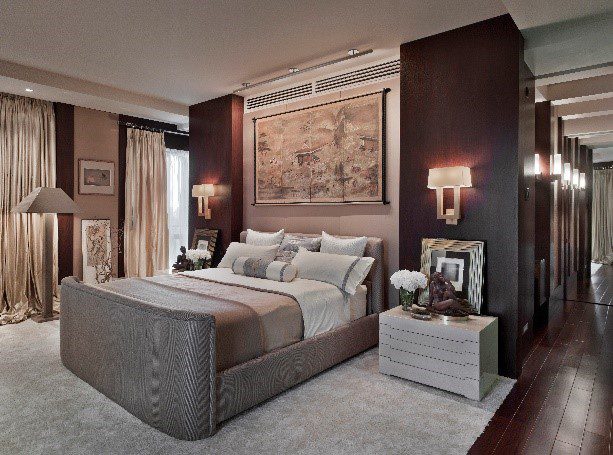Five stars on Google – the hospitality industry’s new holy grail
Credit to Author: Manish Pant| Date: Fri, 13 Dec 2019 13:02:40 +0000
People check into hotels these days with high expectations. Whether their stay is for business or pleasure, guests want to be able to control their room’s temperature, lighting, and curtains, create a variety of ambiences, and summon services, all with the convenience of a personal device or in-room tablet. Put another way, they are seeking comfort and contentment via a frictionless digital experience. And no matter what their experience is, they are likely to tell the world about it on social media, which can have a huge impact on a hotel’s business.
Hoteliers are paying attention – and for good reason. Studies show that issues with guest rooms represent 42% of all hotel complaints and decrease loyalty by more than 11%. On the other hand, if a hotel can increase its review scores by just one point on a five-point scale, it can raise prices by 11.2% and still maintain the same occupancy or market share. Hotel operators know that earning five stars on Google can have as positive an impact on their business as gaining such a rating via traditional hotel classifications – if not more!
 But guest comfort is only part of the success equation at the world’s leading hospitality centers. Hotel operators spend a significant portion of their operating budget on guest room energy, which can account for as much as 80% of power use within the hospitality industry. The challenge is to reduce room energy use without sacrificing guest control and comfort. The good news is, with a fully integrated guest room energy management system, hotels can maximize energy efficiency while delivering an exceptional guest experience.
But guest comfort is only part of the success equation at the world’s leading hospitality centers. Hotel operators spend a significant portion of their operating budget on guest room energy, which can account for as much as 80% of power use within the hospitality industry. The challenge is to reduce room energy use without sacrificing guest control and comfort. The good news is, with a fully integrated guest room energy management system, hotels can maximize energy efficiency while delivering an exceptional guest experience.
Occupancy-based energy management
 Why is guest room energy use so high in hotels? Most people spend less than eight hours per day in their rooms, yet these spaces are often left with the heating or air conditioning, ventilation, and lights on while the occupants are away. Such energy waste eats into profits – especially when you multiply it by hundreds of rooms!
Why is guest room energy use so high in hotels? Most people spend less than eight hours per day in their rooms, yet these spaces are often left with the heating or air conditioning, ventilation, and lights on while the occupants are away. Such energy waste eats into profits – especially when you multiply it by hundreds of rooms!
To combat energy waste and improve their bottom line, hotels are adopting occupancy-based energy management systems. These systems use sensors and controls to adjust heat, ventilation and air conditioning, lighting, and other environmental factors in rooms, based on whether or not a room is occupied. The benefits of an occupancy-based systems are numerous:
- Energy cost savings. Hotels can automatically put rented but unoccupied rooms into setback mode, adjusting temperatures and turning off all but essential power; unrented rooms can be automatically switched to deep setback or temporarily shut down.
- Improved guest experiences and increased revenue. Facility managers are able to initiate preventive maintenance before guests complain, pre-cool or pre-heat rooms to the “occupied” setpoint before guests enter rooms and enable remote troubleshooting and adjustments.
- Decreased maintenance costs. Proactive maintenance identifies performance problems before they escalate, allowing early intervention at a lower cost than making emergency repairs and with less guest disruption.
- Enhanced security. Staff automatically receive alerts if a room is occupied during unrented periods.
- Demonstrated commitment to sustainability. With 95% of business travelers expecting hospitality brands to undertake green initiatives, occupancy-based energy management allows the modelling of climate stewardship to shareholders and guests.
Occupancy-based energy management in practice
Sophisticated guest room management systems can now integrate with building management, property management, and third-party systems to give hoteliers a connected, holistic view of every room in their property. By employing guest room analytics, occupancy-based energy management, and intuitive guest-facing technology, operators can reduce hotel energy consumption, improve operational efficiency, and give guests the comfort, control, and convenience they expect. State-of-the-art components include smart HVAC and light controls, switches, dimmers, sockets, bedside panels, and sensors; electronic and app solutions for interior and exterior wall coverings; and energy-efficient technologies that provide five-star amenities such as underfloor and mirror heating while ensuring a reliable supply of domestic hot water for every guest throughout the day and night.
The Connectivity Ecosystem by Schneider Electric, Somfy, and Danfoss
While there are multiple connectivity offers available, it can be a challenge for hoteliers to find a fully integrated and interoperable solution. That’s why Schneider Electric, Danfoss, and Somfy have partnered to create the Connectivity Ecosystem. The three global leaders bring their own fields of expertise to the partnership to deliver efficient connectivity solutions that are easy to integrate and supported by qualified installers.
Brought together, the advanced solutions offered by the Connectivity Ecosystem deliver substantial benefits to hotels, including:
- Easy, out-of-the-box commissioning for all components
- Fully integrated solutions with tested, validated, and documented architectures
- Training provided across the full range of systems and devices
Bottom line: for a 250-room hotel, fully integrated Somfy and Danfoss solutions connected to the Schneider Electric Hotel Room Controller enable €25,636 in energy savings per year.
To learn more about how the Connectivity Ecosystem is helping hotels worldwide deliver exceptional guest experiences while reducing their energy use, read the white paper, “Balancing Costs and Guest Satisfaction with Integrated Energy Management Systems in Hotels.”
The post Five stars on Google – the hospitality industry’s new holy grail appeared first on Schneider Electric Blog.
